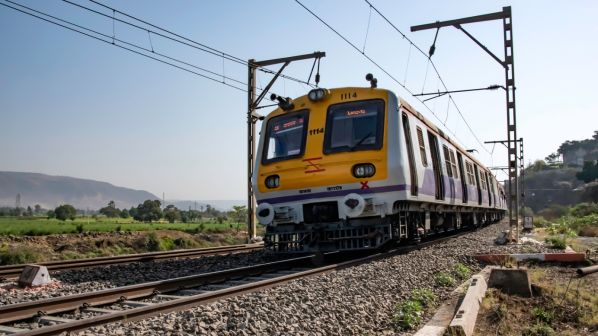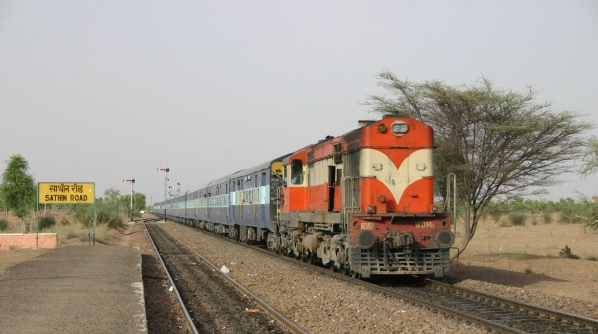IR certainly faces many problems, not least because its operating ratio has hovered around 95% during the last decade, reaching a high of 96.2% in 2018-19.
Despite the push by India’s National Democratic Alliance (NDA) government to upgrade and expand the rail network during the past five years, IR’s 68,400km network has remained hopelessly clogged. Around 80% of the traffic is still concentrated on 40% of the network. Track and signalling systems require upgrading; rolling stock needs replacing; and technological improvements have not happened at the anticipated pace. Passenger services have remained inefficient, generating annual financial losses estimated at Rs 350bn ($US 4.88bn). Meanwhile, roads, ships and pipelines have steadily been gobbling up freight market share.
Of the 23 million passengers/day on IR’s 13,542 trains, 55% travel on suburban services but contribute only 5.28% of passenger revenue.
An internal report, seen by IRJ, highlights the severity of the problems and the lopsided priorities of Indian rail operation. Out of every rupee earned by IR today, 63 paisa are spent on salaries, pensions and allowances, while fuel accounts for another 15 paisa, leaving just 32 paisa for capital investment.
Of the 23 million passengers/day on IR’s 13,542 trains, 55% travel on suburban services but contribute only 5.28% of passenger revenue. Around 27% of passengers travel in sleeper class, but generate only 11.6% of revenue. Sleeper travel in Mail and Express trains accounts for 16.3% of traffic but contributes 51.5% of revenue, while just 1.8% of passengers travel in upper class but generate 9.2% of revenue.
Meanwhile, the rate of growth in upper class travel has fallen from 9.5% in 2014-15 to 5% in 2015-16, indicating a migration to air at a time when the price gap between rail and air travel has narrowed. Conversely, air transport recorded a healthy 20% increase in traffic in 2015-16. An even more disturbing statistic is that 25% of rail passengers prefer air travel even for distances of less than 500km.

IR has introduced a series of systemic course correction policies in the last few months. Having initially toyed with the idea of permitting private players to operate passenger trains on 25 routes linking cities up to 500km apart, the IR chairman, Mr Vinod Kumar Yadav, recently expanded the concept by announcing that 150 passenger trains on 50 inter-city and overnight routes will be allowed to be operated by private companies. IR intended to invite global bids, including from private train operators, last month. IR hopes to finalise the contracts by December 2020 enabling the first batch of private trains to start operation by 2023.
Routes identified include:
- Delhi – Mumbai
- Delhi - Howrah (Kolkata)
- Bengaluru – Chennai
- Bengaluru – Mysuru
- Secundrabad – Vizag
- Secundarabad - Nagpur, and
- Vizag - Howrah (Kolkata).
Based on the expectation that India’s eastern and western Dedicated Freight Corridors will finally open by 2021 (p6), IR plans to increase speeds for passenger trains on parallel main lines. In the next four years, IR plans to run trains at 320km/h on the Mumbai - Ahmedabad high-speed line and between 160km/h and 200km/h on several main lines including Delhi - Mumbai, Mumbai - Nagpur, and Delhi - Howrah (Kolkata). Currently, the Vande Bharat, with a top speed of 130km/h, is India’s fastest train, while the average speed of Mail and Express trains is just 55km/h.
IR is also selling shares in public sector undertakings (PSUs) such as the Container Corporation of India (Concor). Last year, IR offloaded its shares in Indian Railways Catering and Tourism Corporation (IRCTC), Rail Vikas Nigam and Rail India Technical and Economic Services (Rites).
“If private players bring in their rakes or take them on lease, IR will no longer need to spend on replacing the outdated 43,000 coaches.”
Senior official from government think tank Niti Aayog
At the same time, IR has initiated moves to cut costs by reducing staff numbers by 300,000 through voluntary retirement. Setting up the Rail Development Authority (RDA), an autonomous body to determine tariffs and regulate safety, is in the pipeline.
IR’s partial privatisation plans are being pushed through in a bid to attract private and foreign investment. If 150 16-car private trains are introduced, the rail network would benefit from the introduction of 2400 new coaches. With each vehicle costing an estimated Rs 80m, this would equate to a private investment of about Rs 17bn. “If private players bring in their rakes or take them on lease, IR will no longer need to spend on replacing the outdated 43,000 coaches,” says a senior official from government think tank Niti Aayog. “Besides reducing manufacturing costs, IR will be able to save money and manpower that it annually incurs on maintaining locomotives and coaches.”
“Such arguments are splendid, but one must remain wary of situations that could take rail travel out of the reach of India’s poor travellers,” says Mr Sanjay Pandhi of the Indian Railways Loco Running Men Organisation (IRLRO).
Compromise
Rail travel in India has historically served the needs of low-income groups, but some say IR would compromise its social commitments by allowing private players to enter the market. It is largely felt that private companies will offer better services for which passengers will need to pay more.
“In the quest to display glitzy trains, focus must not get lost on bread-and-butter issues.”
Subodh Jain, former IR board member
Retired IR general manager, Mr A K Jain, also strikes a note of caution: “Each time a fast-moving train is introduced on the cramped lines that carry mixed traffic, the slow-moving passenger and freight trains become the scapegoats. These are either taken off or their timetables are made to go awry to ensure that the fast trains get priority.”
Former IR board member Mr Subodh Jain has a different perspective: “In the quest to display glitzy trains, focus must not get lost on bread-and-butter issues such as ensuring punctuality, safety or environmental standards of the Mail and Express trains.”
There is already concern that IR failed to obtain the required commitment on emission standards when it awarded GE a $US 2.5bn contract in November 2015 to supply 700 3.36MW locomotives and 300 4.47MW units over an 11-year period through a joint venture with IR. The first of 40 locomotives built in America was handed over to IR in February 2018, while the remaining 960 units are being assembled at a new joint venture facility at Marhoura, Bihar.
While railways in Europe, Australia and the United States have migrated to the Tier-II and Tier-III emissions standard, the terms of the GE contract only included a commitment to supply locomotives designed for the now obsolete Tier-1 emission standards. Unlike other modes, emission standards have not been set for IR. Following a Public Interest Litigation (PIL) filed in the Delhi High Court, the Central Pollution Control Board (CPCB) set up a committee to review the matter.

